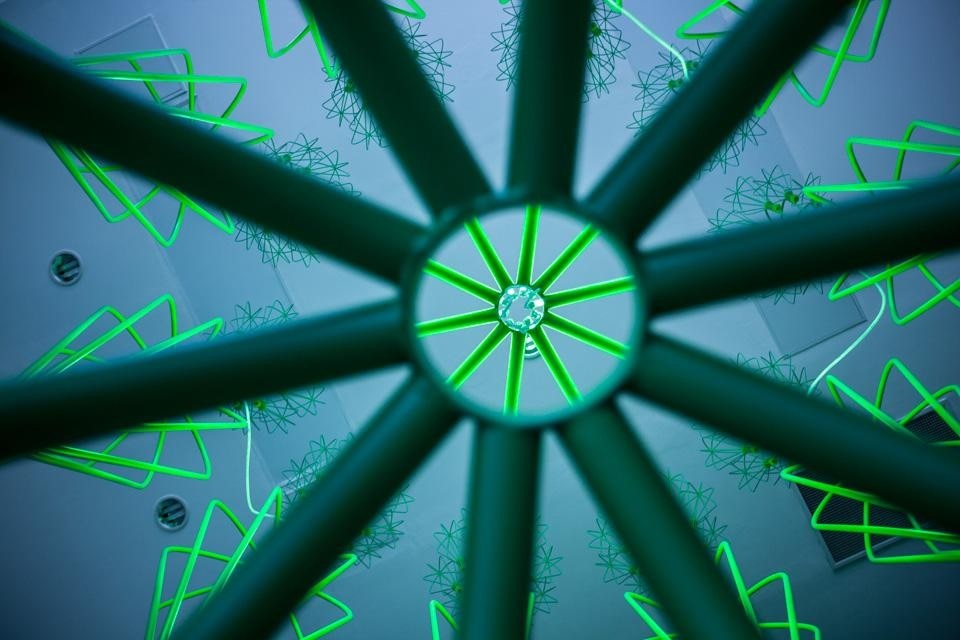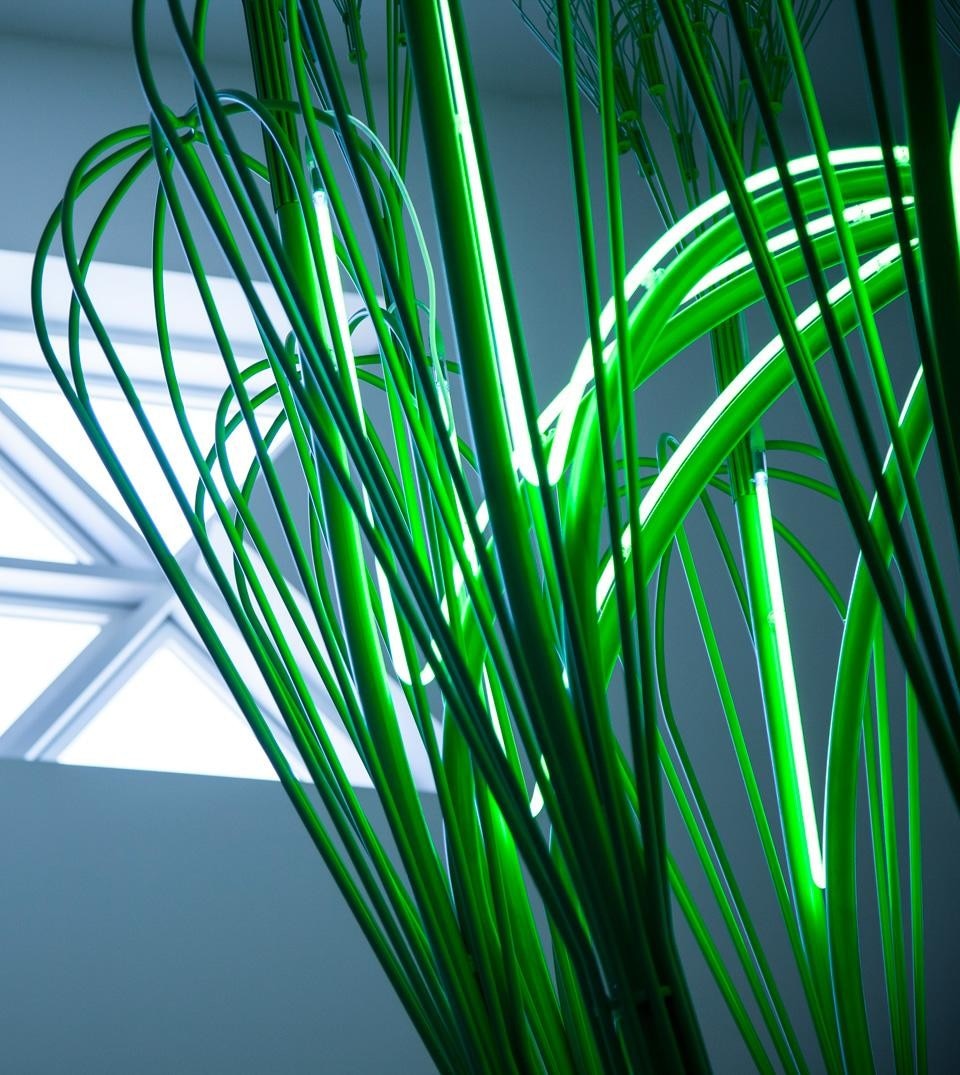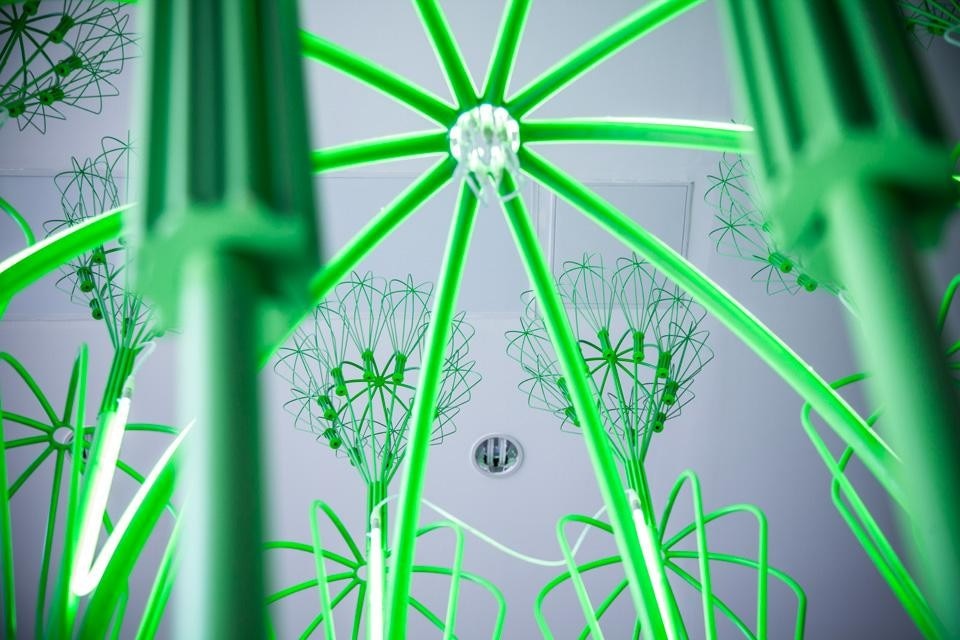Ivo Bonacorsi: I want to talk about Emulsion , your project for the new hotel-management high school in Montpellier by Massimilano Fuksas. You used the French 1% for art law.
Matali Crasset: I believe this project lies at the heart of my work, and it is a good approach for a couple of reasons. First of all, my site specific work derives from a precise interest in developing this possibility for the local community. One percent is calculated on the total construction budget. It is allocated by the Regional Council to promote artistic work in all building projects. For all intents and purposes, it is public money used for funding artistic interventions in places outside Paris, even in large urban areas.
I think that it is a French distinction — like the cultural exception for audiovisual work. Perhaps it is a slightly obscure procedure.
We take special interest in these differences in France. But this practice derives from a precise law from 1951. It was definitely unusual at the time. But it is a very technical and selective legislative instrument.
When you turned on your computer to look for some of the project images, I noticed that the Emulsion file dates from 2010.
That's why I spoke about technical time frames and precise procedures; and then there's a somewhat laborious gestation. You have to respond to very precise requirements.
Fuksas' project is unique.
It is a large hotel-management high school with boarding facilities and a real hotel and restaurant that are managed by the school. The fluidity of the aluminum façade gives the building its iconic appearance and identity. I worked in an almost immaculate white interior. I chose a very strong symbol — the egg whisk. I manipulated it using the idea of pollination and a tree structure. I am very attached to the qualities of plant growth. So the whisk became a lamp, a ramp/screen and, of course, the large totemic structure at the building entrance.

When you work with 1%, you know that you are in the same boat as the architects and their local office. There are one or more specific client requirements with precise rules that must be observed. It is not simply a matter of arranging furniture or putting up an artistic installation. The building's intrinsic qualities must be enhanced by the artistic intervention. Then you have to think about production, keeping in mind the operations necessary for creating effective harmony with the space. When you see the Fuksas building, you immediately realize that it would have been almost impossible to work on the exterior. I was asked to face the question of interior light and that was the issue I decided to work with. My relationship with the object became a soft fiction on light.

Not at all, because it implies precise interactions with the local community. It is important to move towards the local dimension. The FRAC (Regional Fund for Contemporary Art) and regional governments are involved in cultural decisions. They are committed to exploring the impact of your work on a local level — with the public and the territory. Ten schools now have, or will have, a project by contemporary artists thanks to the 1% law.
It seems that they are accustomed to this type of project in Montpellier. Starting some time ago, Georges Frêche (for whom the school is named after) began to commission "foreign" designers — from Ricardo Bofill to Zaha Hadid.
I am less political and much more pragmatic. I find that, in these contexts, people like Lili Laxenaire and Eric Binnert and structures like theirs — the Agence Pièces Montées — can coordinate the logistics of projects like these even with designers who are not local.
When you see the Fuksas building, you immediately realize that it would have been almost impossible to work on the exterior. I was asked to face the question of interior light and that was the issue I decided to work with. My relationship with the object became a soft fiction on light

I think there is much work to be done in a more contextual direction. But above all, I think it's necessary to rethink design for the greatest number of situations and possibly for the most unusual ones.



